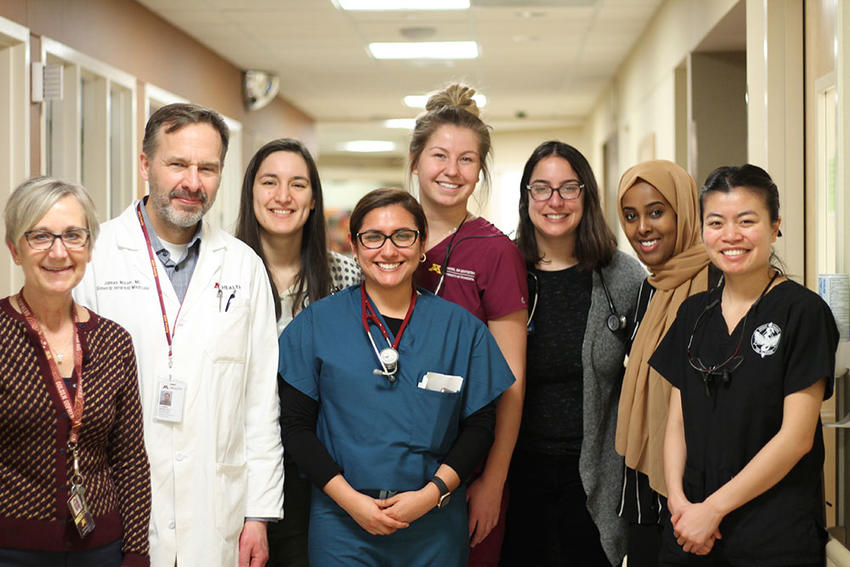Making the Rounds for Oral Health

Our dental hygiene and dental therapy students are now embedded in hospital rounding teams as part of an initiative to create a more integrated approach to in-patient care.
Funded by a BOLD Ideas grant from the Office of Academic and Clinical Affairs, the initiative brings together students and faculty from medicine and oral health to assess and treat hospital patients more holistically and learn from one another.
“We are learning more and more about the interaction between oral health and systemic health,” said Kathleen Lane, MD, a hospitalist at the University of Minnesota Medical Center. “And the more we learn, the more grateful we are for this partnership and for the expertise our dentistry colleagues bring.”
The oral health of hospitalized patients can often be overlooked due to the severity of their conditions and the limited oral health education in medical school curricula. However the mouth can be a bellwether for health problems that School of Dentistry students are trained to detect.
“Through an oral exam, we might discover the source of infection for patients who are septic. We may see thrush - or candidiasis – which can be a sign of a compromised immune system,” said Cyndee Stull, MDH, who coordinates the program. “There is so much that can be learned.”
Together students visit patients with their medical and pharmacy counterparts along with the attending physician to assess patients’ overall health. As part of the initiative, dental hygienists are also on call at University of Minnesota Medical Center to perform dental hygiene consultations as needed.
In addition to providing more comprehensive care to hospitalized patients, the new partnership is designed to give medical students more confidence in performing oral exams and give dental hygiene and dental therapy students more experience in recognizing the oral manifestations of broader systemic diseases.
Lane, whose research interests are in diagnostic reasoning and diagnostic errors, says having a hygienist on the team and in the hospital will improve outcomes. One example, she says, is the incidence of aspirational pneumonia.
“Some of the patients we see here do not have the resources to see a dentist regularly,” said Lane. “Poor oral health can lead to pneumonia for patients whose health is already severely compromised. This can leads to need for a course of antibiotics, a longer hospital stay, and potentially the need for a ventilator. And it can sometimes be deadly.”
The $30,000 grant was one of seven awarded by the U of M Office of Academic and Clinical Affairs.
Both Stull and Lane believe the collaboration should be standard practice in hospitals everywhere.
“Because health care has become so complex, we need to communicate more and broaden the health care team to include the important expertise of more professionals,” said Lane.